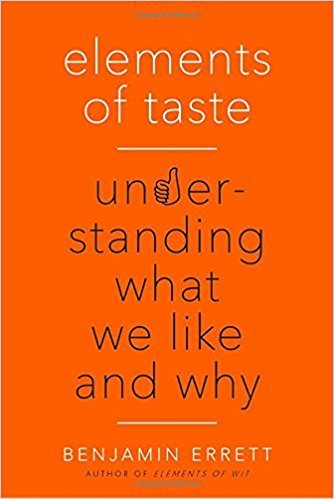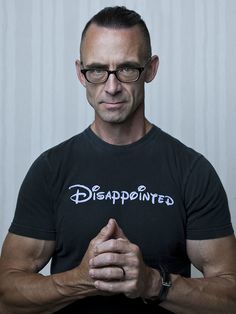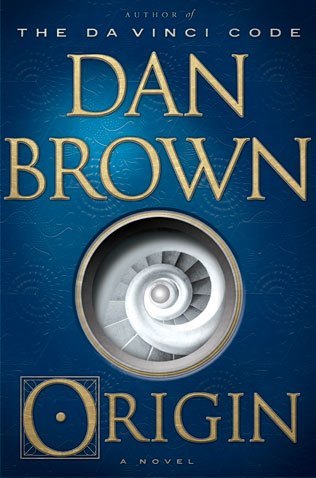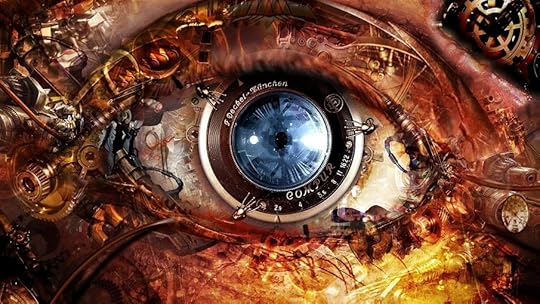Richard Harris's Blog, page 12
November 7, 2017
AI, Suicide & Mental Health Initiatives
As regular visitors to my site will know, I am passionate about the subject of mental health, especially when it comes to better understanding it and exploring ways to combat/solve/help/address (not sure of the best verb here) it.
I suppose one could argue that suicide is the most extreme – and troubling – form of mental health problems/issues/dilemmas (again, a semantics question). As someone I met years ago once stated ever-so bluntly: “If you think you know what rock bottom is, think again. Rock bottom is death.”
Writing for @futurism, Dom Galeon posted a piece titled “Machine Learning Is Aiding in the Fight Against Mental Illness” that is equal measure “morning call” (as they say in Korean) and equal measure bastion of hope.
Per the article:
“[A] team of researchers from several institutions including Carnegie Mellon University and Harvard University developed a machine learning algorithm trained to understand neural representations of suicidal behavior, and it works with a regular functional magnetic resonance imaging (fMRI).”
The evidence can be seen in these images:
So, why, you might ask, is it critical to rely more heavily on AI for identifying suicidal tendencies? Because of this:
“At present, the best way to anticipate suicidal behavior is to directly ask a person if he’s ever thought about it. However, that’s not entirely accurate, as studies have shown that almost 80 percent of people who committed suicide denied having had suicidal tendencies during their last appointment with a mental health professional. This new algorithm can help address this issue.”
Even science has its limitations, though. As Dr. Marcel Just from Carnegie Mellon puts it,
“It would be nice to see if we could possibly do this using EEG, if we could assess the thought alterations with EEG. It would be enormously cheaper. More widely used.”
But, Dr. Just adds,
“If somebody didn’t want others to know what they are thinking, they can certainly block that method. They can not cooperate. I don’t think we have a way to get at people’s thoughts against their will.”
Thus, it’s still up to us as friends, family members, colleagues, loved ones, and humane humanoids to reach out in the oldest way possible: by talking; by listening; and by empathizing with, not judging, others in their time of need.


Foodie Fantasia with a Savvy/Savoury Twist
John Semley has a book for all you foodies out there to consider in his article in The Globe and Mail titled “Review: Benjamin Errett’s Elements of Taste is refreshingly prescriptive.”
On top of Benjamin Errett‘s “Grand Unified Theory of Taste,” he of course explores the five central cultural flavours and even delivers some “tasting menus” in Elements of Taste: Understanding What We Like and Why.
As Mr. Semley writes, there’s depth and humour at play here, too:
“Those savvy enough to catch a reference to a middlebrow ensemble comedy [The Royal Tenenbaums] are expected to be won over to Errett’s side. “This guy likes what I like,” an imagined reader may think. And in discussing matters of taste – and in criticism more generally – a sense of friendly affinity goes a long way.”


Quote of the Day
“It’s so hard to forget pain, but it’s even harder to remember sweetness. We have no scar to show for happiness. We learn so little from peace.”
― Chuck Palahniuk,
Diary
I like Chuck Palahniuk. He’s one of those rare novelists who goes at his writing full force, no holds barred, a total I-don’t-give-a-shit-what-you-think attitude that is neither cavalier nor annoying; he’s simply fabulous because his words hit at every truth with raw, naked, blunt honesty. That’s why, at least in part, I think he’s so revered by his legion of die-hard fans in a way few other authors are.
Although many people will be most familiar with him through his novel Fight Club, which was then turned into a movie that “was a flop at the box office, but achieved cult status on DVD,” Palahniuk has written a lot more since then – and in several different genres.
More than that, however, he’s a big believer in giving back to readers and writers. Per his publisher:
“In 2004, Chuck began submitting essays to ChuckPalahniuk.net on the craft of writing. These were ‘How To’ pieces, straight out of Chuck’s personal bag of tricks, based on the tenants of minimalism he learned from Tom Spanbauer. Every month, a “Homework Assignment” would accompany the lesson, so Workshop members could apply what they had learned. (all 36 of these essays can currently be found on The Cult’s sister-site, LitReactor.com).”
Click on the above links if you want to investigate that further, but in the meantime – and to further back up my point that Palahniuk is not only a great storyteller, but can turn out one-liners with the best of them, check out these other gems from Diary alone:
“We all die. The goal isn’t to live forever, the goal is to create something that will.”
“Just for the record, the weather today is calm and sunny, but the air is full of bullshit.”
“All the effort in the world won’t matter if you’re not inspired.”
“Just for the record, the weather today is bitter with occasional fits of jealous rage.”
“You’re always haunted by the idea you’re wasting your life.”
“Your handwriting. The way you walk. Which china pattern you choose. It’s all giving you away. Everything you do shows your hand. Everything is a self portrait. Everything is a diary.”
“Everyone’s in their own personal coma.”
“Just for the record, she still loves you. She wouldn’t bother to torture you if she didn’t.”
“For the record, knowing when people are only pretending to like you isn’t such a great skill to have.”
“You have endless ways you can commit suicide without dying dying.”
“Angel says that rich people don’t like to tolerate much. Money gives you permission to just walk away from everything that isn’t pretty and perfect. You can’t put up with anything less than lovely. You spend your life running, avoiding, escaping.”
“Maybe it’s just a daughter’s job to piss off her mother.”
“You’re doomed at being you.”
“The truth is, wherever you choose to be, it’s the wrong place.”
“Of all the priceless objects left behind, this is what we rescue. These artifacts. Memory cues. Useless souvenirs. Nothing you could auction. The scars left from happiness.”


November 6, 2017
Trust: One Syllable, Five Letters, Years in the Making
Steve Bryant has an all-too-true piece about the rapport between brands and content titled “Make relationships, not things.” Or, as the byline goes, “You can’t ‘thing’ your way to people trusting you.”
I like that, ’cause I don’t like it when people try and thing me.
What’s interesting about the article, however, is not just the down-to-earth, interpersonal aspect to Mr. Bryant’s writing, but the fact that the lessons can be applied to so many different facets of life. And one of those is writing/storytelling:
“All storytelling decisions begin with deciding what kind of relationship you want to have with your audience…All relationships are based on trust.”
Be truthful with your reader. One of the earliest lessons I learned about good writing is never to underestimate your reader. No matter how “unrefined” you may think the average reader is, they will pick up on more than you would sometimes care to imagine. In short, their BS radar is a highly effective, well-weaponized piece of mental ironmongery.
“[T]he storyteller knows that they, the storyteller, aren’t the point of the discourse; the point of the discourse is the idea — which is larger than the storyteller and which never ends.”
I suppose this would best be summarized as follows: show don’t tell. Or perhaps simply, Lose the ego, yo; nobody cares about how cool your mullet is or how many degrees you’ve earned online from Einstein U.
This approach would then be furthered by what every writing teacher and art instructor tells their pupils: Do what it is you’re passionate about, and let that passion flow through your work. When it’s not blood, sweat, tears, hope, remorse, love, hate, loss, bliss, failure, aspirations, etc. coming through the bottom line, the reader won’t make it to the end of the line you’re writing.
“[T]he liar is lying because they fear a negative response to the truth. They’re afraid that if they tell somebody the truth, that somebody will no longer like them, or love them, or trust them, or whatever it is the liar fears most. They care about themselves, not their audience.”
Given a slight twist: Don’t try and create human nature through your words, emulate and reflect it. If nature is the vast canvas on which all life takes place, then your challenge is to hold your very own mirror up to it so that others can see the image just as well, if not better, than you do.
Like I said in the beginning, Mr. Bryant is ostensibly talking about the brand/content relationship in his writing, so I’ll leave it off here today with one of my favourite lines he penned about perfidy and the deliberate breach of trust:
“[R]eject all kinds of stupid perfidy, from the deplorable (“eco-conscious” gasoline companies), to the inane (unlabeled-but-paid-for lifestyle porn on Instagram), to the wildly unhealthy (stop posting for the likes, friend — you’re killing yourself).”


November 5, 2017
Quote of the Day
“You are braver than you believe, stronger than you seem, and smarter than you think.” — A.A. Milne, Winnie the Pooh
Oh, Pooh Bear! Vestiges of my youth, indeed. You and Peter Rabbit and a few other animals dueled it out for top spot on my bed at night in stuffed animal form.
It’s Sunday, so in lieu of a Disney Movie of the Week, I offer you this feel-good quote.


Samizdat: The Forbidden Fruit of Publishing
Sweet ride! How ’bout ‘dem apples?
Scrabble players, here’s your word of the day: samizdat (no need for italics because it’s in English dictionaries!).
Essentially, a samizdat (a Russian word) refers to self-publishing, but in an environment when dissidents must go underground to avoid censorship or worse. According to the well-known Soviet dissident leader Vladimir Bukovsky, samizdat can be defined in the following way: “I write it myself, edit it myself, censor it myself, publish it myself, distribute it myself, and spend jail time for it myself.”
Nice!
Probably the most famous book published in this style was Mikhail Bulgakov’s The Master and Margarita, still one of my favourite novels of all time. And if you think it’s hard to get published today, read up on Bulgakov’s own tragic tale.


The Dan Brown Paradox
Dan Brown has a new book out, Origin, which means it’s time for The Dan Brown Paradox (DBP) once again. You know the DBP, that part of the Olympic Read-a-thon (he seems to publish once every four years or so) calendar to debate whether you will join in the chorus of groans and sighs, or whether you’ll remain a casual observer off to the side, knowing deep down you want to read it because it’s a win-win situation: if it completely stinks, you have much to gossip about at your next book club meeting (after revealing you didn’t read the club’s book o’ the month ’cause you were too “crazy super busy”); if you do like it, you get to trash it and feel somehow more cultured than the rest of society because you found the clues Langdon missed, and you can dissecting the grammer, Spelling and lexical diction of his writing gooder than any any other hacker.
I’ve read two of his “opi,” The Da Vinci Code and Inferno, and have to admit that he knows how to pen a page-turner. The history is questionable at times, the characters are coarsely wooden to the point of being full-time stiffies, and the dialogues are, umm…Surreptitious? Clandestine? Furtive? Sexy yet mild?
Still – and for reasons nobody can really explain – we want more, more, and more! of Mr. Brown’s trunk-filled junk. (Plus, in all the interviews I’ve seen of him, he seems like a genuinely nice guy, so whoever the hell said nice guys finish last can go and suck it because his net worth is now somewhere around $200 million.)
Whatever the case, I’m still an ardent believer that if someone can get you to read, there is, at the very least, value in that.
But there’s also value in poking fun at the super-rich guy because he’s, well, uber rich. That got me to thinking of what others were writing online about Mr. Browndon, and here are the three best reviews of Mr. Langrown I came across:
“Renowned author Dan Brown gazed admiringly at the pulchritudinous brunette’s blonde tresses, flowing from her head like a stream but made from hair instead of water and without any fish in them.”
“It made his insect eyes flash like a rocket. The voice at the other end of the line gave a sigh, like a mighty oak toppling into a great river, or something else that didn’t sound like a sigh if you gave it a moment’s thought.”
“The critics said his writing was clumsy, ungrammatical, repetitive and repetitive. However, they added, it was also repetitive in some places, yet repetitive in others.”


November 4, 2017
Quote of the Day

“The brick walls are there for a reason. The brick walls are not there to keep us out. The brick walls are there to give us a chance to show how badly we want something. Because the brick walls are there to stop the people who don’t want it badly enough. They’re there to stop the other people.”
–Randy Pausch, “The Last Lecture”
I am flattered and embarrassed by all the recent attention to my “Last Lecture.” I am told that, including abridged versions, over six million people have viewed the lecture online. The lecture really was for my kids, but if others are finding value in it, that is wonderful. But rest assured; I’m hardly unique. Send your kids to Carnegie Mellon and the other professors here will teach them valuable life lessons long after I’m gone. — Randy
Holy moly. I don’t know how I’d never heard of Randy Pausch or “The Last Lecture” before today, but do yourself a favour and watch one of the two versions of this talk I’ve linked to below. Per his introduction on Goodreads:
Randy Pausch was a Professor of Computer Science, Human-Computer Interaction, and Design at Carnegie Mellon University (CMU) in Pittsburgh, Pennsylvania, United States and a best-selling author, who achieved worldwide fame for his “The Last Lecture” speech on September 18, 2007 at Carnegie Mellon University.
Two versions to choose from:
Here’s the abridged version from Oprah, just over 10 minutes long.
And here’s the full version, just under two hours long.
And here’s the rest of Randy Pausch’s story from Goodreads:
In August 2006, Pausch was diagnosed with pancreatic cancer. He pursued a very aggressive cancer treatment that included Whipple procedure surgery and experimental chemotherapy; however, in August 2007, he was told the cancer had metastasized to his liver and spleen, which meant it was terminal. He then started palliative chemotherapy, intended to extend his life as long as possible. At that time, doctors estimated he would remain healthy for another three to six months. On May 2, 2008, a PET scan showed that his cancer had spread to his lungs, some lymph nodes in his chest and that he had some metastases in his peritoneum and retroperitoneum.
On June 26, 2008, Pausch indicated that he was considering stopping further chemotherapy because of the potential adverse side effects. He was, however, considering some immuno-therapy-based approaches.
On July 24, 2008, on behalf of Pausch, his friend (anonymous) posted a message on Pausch’s webpage indicating cancer progression further than what was expected from recent PET scans and Pausch becoming more sick than ever. It was announced that his family had sent him into a hospice program — palliative care to those at the end of life.
On July 25, 2008, Diane Sawyer announced on Good Morning America that Pausch had died earlier that morning.


Translation & Book Cover Designs
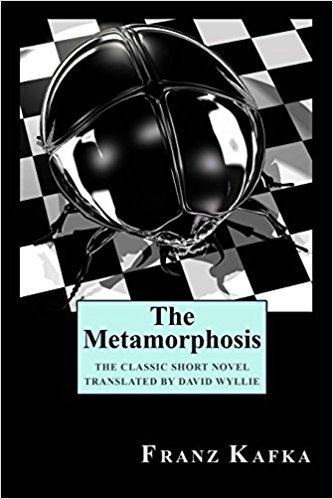
Ennnnn! (Sorry, I’m trying to figure out the onomatopoeia for a buzzer sound when you’re wrong.) The above book cover design would have infuriated Franz Kafka.
Josh Jones has written an interesting piece titled “Franz Kafka Says the Insect in The Metamorphosis Should Never Be Drawn; Vladimir Nabokov Draws It Anyway” for openculture.com that is quite eye-opening. Well, eye-opening in the way that word-nerd enthusiasts and translators get excited about. As Mr. Jones claims:
“If you’ve read Franz Kafka’s The Metamorphosis in English, it’s likely that your translation referred to the transformed Gregor Samsa as a ‘cockroach,’ ‘beetle,’ or, more generally, a ‘gigantic insect’…But the German words used in the first sentence of the story to describe Gregor’s new incarnation are much more mysterious, and perhaps strangely laden with metaphysical significance.”
As such, the following book cover design is a more open interpretation of Kafka’s intentions with Gregor’s metamorphosis.

But there’s more to it than that. Mr. Jones goes on to quote translator Susan Bernofsky and her article from The New Yorker, “On Translating Kafka’s ‘The Metamorphosis’“:
“[B]oth the adjective ungeheuer (meaning “monstrous” or “huge”) and the noun Ungeziefer are negations—virtual nonentities—prefixed by un.” Ungeziefer, a term from Middle High German, describes something like ‘an unclean animal unfit for sacrifice,’ belonging to ‘the class of nasty creepy-crawly things.'”
Thus, Bernofsky argues:
“Kafka wanted us to see Gregor’s new body and condition with the same hazy focus with which Gregor himself discovers them.”
And that’s why the original German publication of Die Verwandlung is closest to Kafka’s vision of the perfect book cover design.



If I Could Turn Back Time…
No, it would not be to recreate a Cher song. Or maybe it would. I’m not sure at this point because I have the stupid thing playing on a loop in my head right now.
Writing for futurism.com, Chelsea Gohd published a piece called “We Can’t Alter The Flow of Time But, According to Physics, We Can Bend It” a few days ago, and I lapped up every word.
We’ve all considered the notion of time travel at one point in our lives. Don’t deny it. Ever since that excellent! film (not movie) Back to the Future II, when Biff steals a sports almanac and goes back in time to make himself crazy rich, we’ve all entertained notions of joining the Biffs of the world.
As far as I understand – and with much of what I learned at M.I.T. relegated to the depths of the Mariana Trench – Einstein conceived of travelling forward in time (assuming we could reach the speed of light), but never back in time. He did leave open one possibility that even he could only speculate about: wormholes.
Although I’m generally apathetic when it comes to sci-fi literature and movies, I’ve been thinking a lot about the space-time continuum lately because of a Korean novel I’m helping to translate, author Kim Hee-sun’s The Multiverses of Infinity (무한의 책).
It goes without saying that I’m ecstatic to be part of a project I truly believe in and helping breathe life into it for English readers one day. (Think Kafka meets Murakami Haruki in a dark Prague alley, somehow the two speak the same language, and after a quick meet-and-greet of sorts, they decide to stroll off together to a Harajuku jazz club, where they will discuss beautifully shaped ears and huge insects.) And since the plot of Multiverses involves a character going back in time, it’s got me thinking.
Without giving away too much of the plot, the central driving force for this character to go back in time is to help someone, not hurt them, and not to benefit in any selfish way like our friend Biff. If we as human beings ever do come up with a way to travel through time, I can’t help but wonder what our motivation would be.
Anyway, Ms. Gohd’s article on space-time is nothing short of fascinating and illuminating. And to quote Gohd quoting Stephen Hawking at the end, “Even if it turns out that time travel is impossible, it is important that we understand why it is impossible.”





